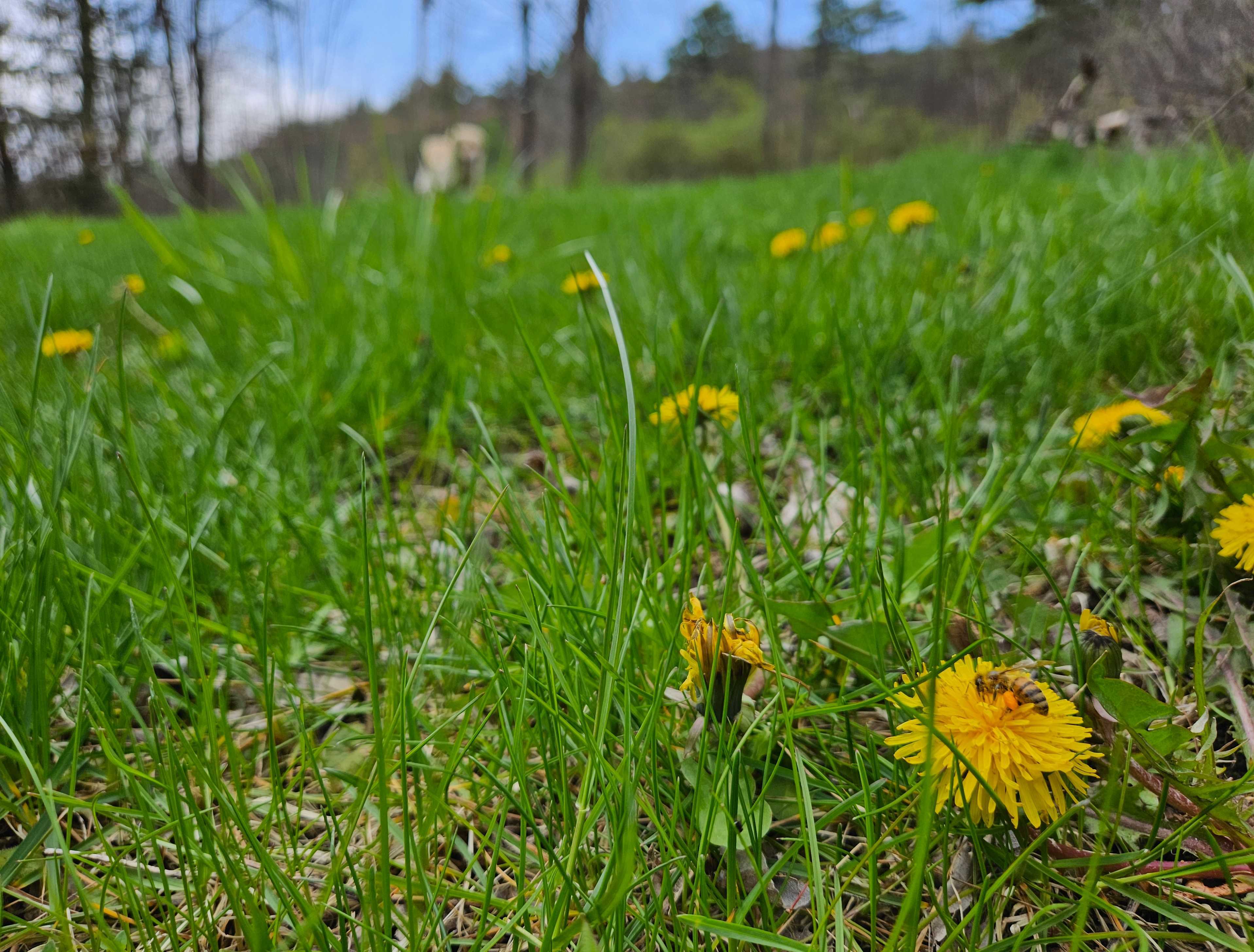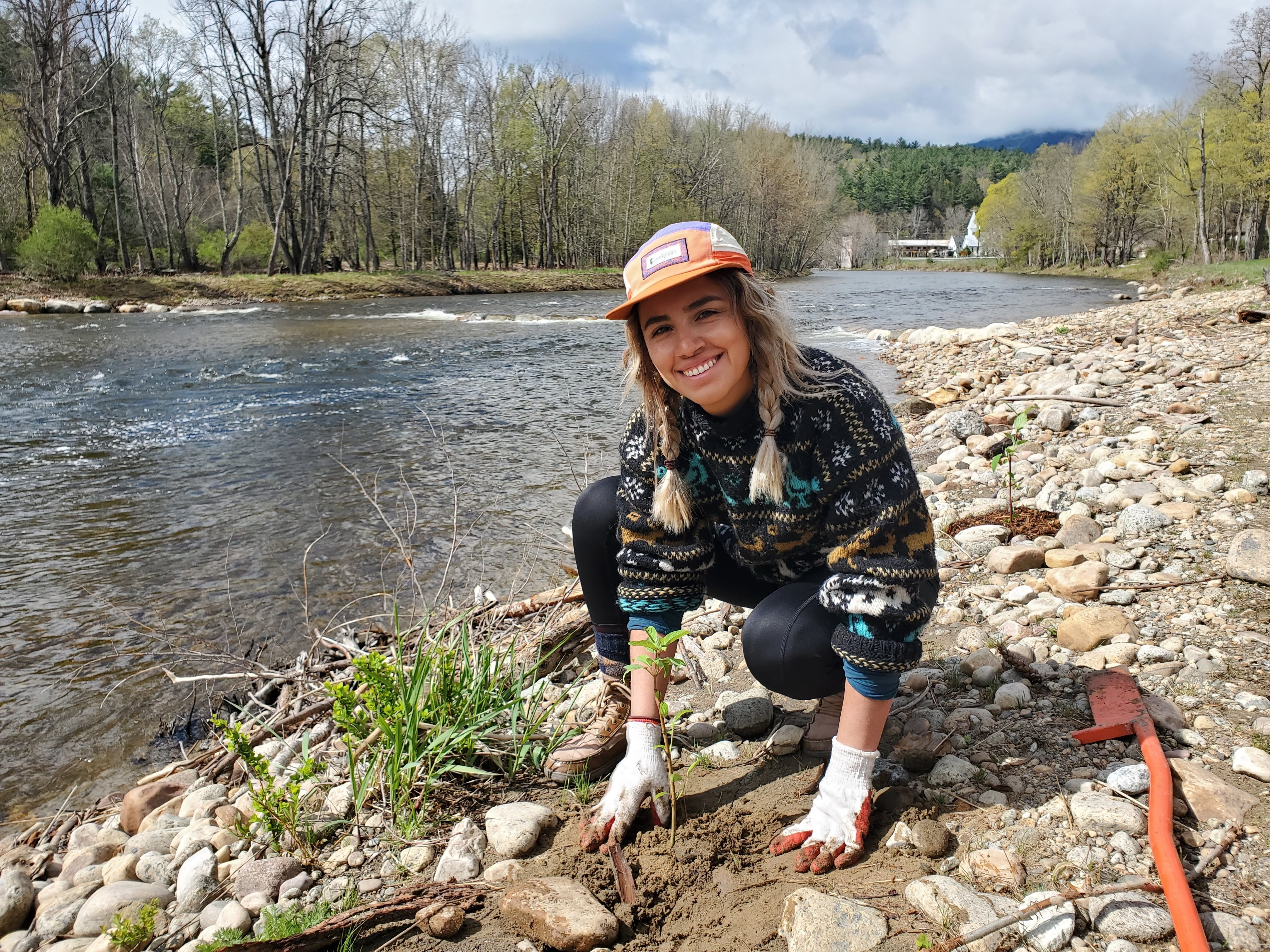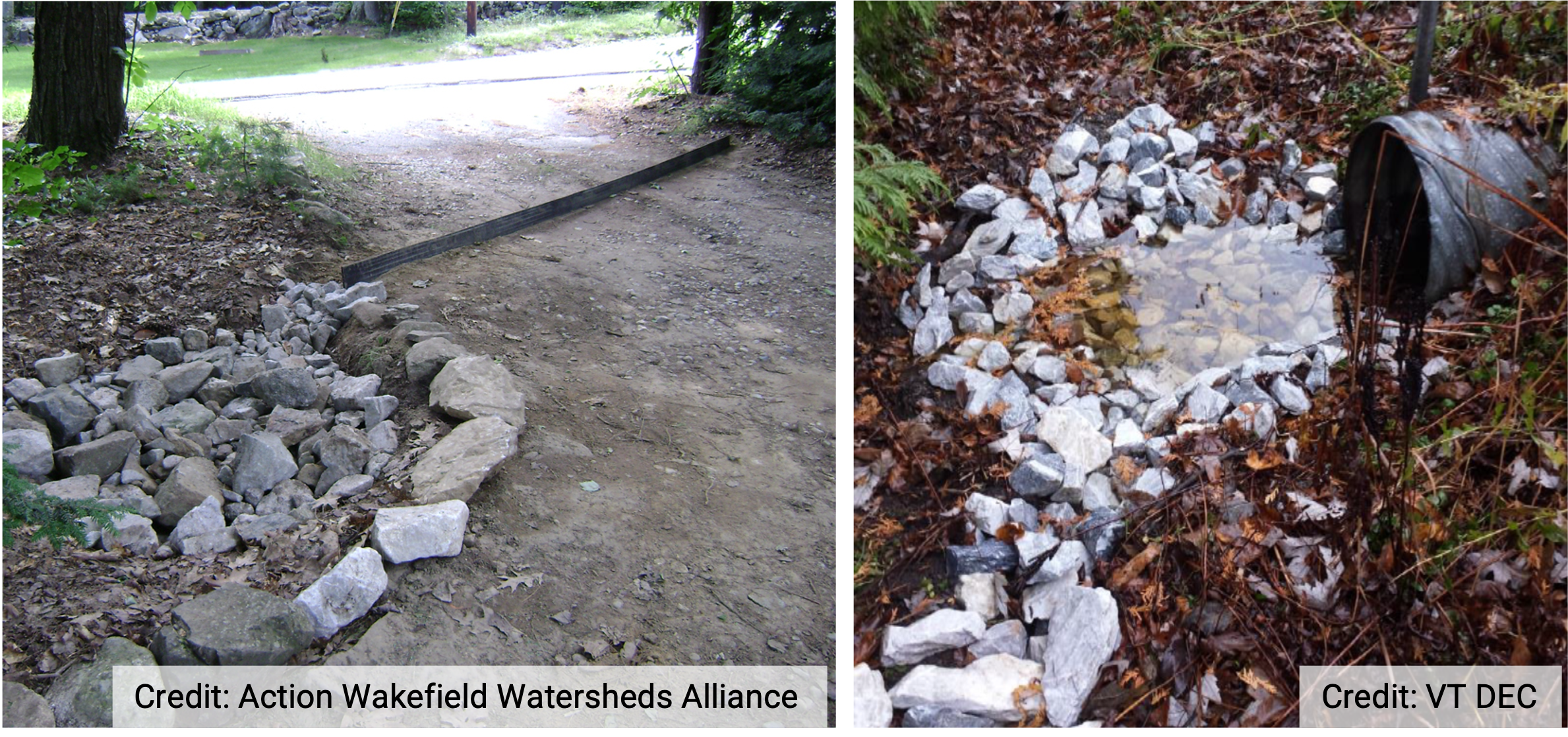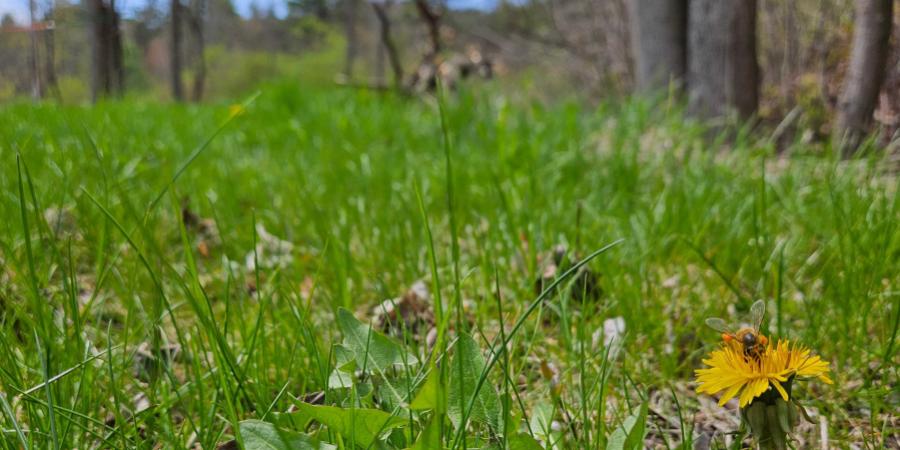With warm temperatures arriving, birds singing, and leaves starting to pop, it is tempting to get outside and clean up your yard and gardens. And while your property may not look quite as neat as you'd like it, a 'messy' yard can be beneficial both to pollinators and the health of your streamside buffer. There is still plenty of work you can do outside to be a good stream steward while protecting early season habitat and food for wildlife.
If you really want to help pollinators, here are a few practices to adopt during spring cleanup.
Wait to rake. Dead leaves from last fall might be providing a habitat for dormant insects. Many insects, including bees and caterpillars, go into diapause, similar to hibernation in mammals, during the winter. While temperatures may feel warm enough for us to get moving outside, insects need temperatures to get over 50°F consistently before they become active. This means that insects may still be dormant under the dead leaves or in dead plant stalks in early spring. Raking leaves or cutting plant stalks left in the garden can kill insects that are using them as a place to rest if they haven’t ‘woken up’ yet. Waiting longer to rake and clean up your yard and gardens can help ensure that insects are given the time to come out of diapause naturally, giving them a better chance of survival. Leaving areas, like gardens or forest floors, unraked throughout the year can also help add nutrients to the system as those leaves and needles decompose. It is best not to rake the ground within a streamside buffer as that layer of duff, or leaf litter, can help to absorb and infiltrate water.

Wildflowers growing in lawns can be an important source of food for newly emerged pollinators.
No Mow May. Manicured lawns are the standard in many places. Though these neat green blankets are attractive to us, they are not to pollinators, birds, or wildlife. By letting dandelions and other wildflowers bloom, you are providing an important early source of food for insects that have just emerged. Though dandelions and other common yard weeds are not native, they are often some of the earliest flowers to bloom and might be the only food around. If leaving your lawn to grow for the whole month of May seems daunting, consider mowing fewer times, and letting some wildflowers bloom in between mowing or mowing around them. If you are willing to leave some areas that you mow only once a year, you can create a meadow that will provide benefits to insects, birds, and wildlife year-round. If you are a streamside landowner, letting lawn areas become meadows can help to increase the efficiency of your riparian buffer. Mowed grass does little to slow down overland flow from precipitation so areas of concentrated flows can form. Meadows can help to slow that flow so water is infiltrated into the ground where pollutants can be removed from the water before it enters a stream.
Support our biodiverse habitats work for wildlife and their habitats. Give with confidence today!
Project ideas for your early spring cleanup
Identify and manage invasive species. Invasive species are some of the first plants and shrubs to break bud and leaf out in the spring. This is one mechanism that allows them to outcompete native species. The early dense vegetation of invasive species shades out low growing native species including ephemeral wildflowers and even tree saplings. So, while spring is not the time to cut stems in the garden or your grass, it can be a good time to manage invasive species because they are easy to identify at this time. Bush honeysuckles are quite common in understories across the Ausable River watershed and much of the Lake Champlain Basin. They are often one of the very first shrubs to leaf out making them a good species to target during spring management as they are easy to identify. Birds are often attracted to bush honeysuckles because they leaf out early, but they don't provide either the nutrients or habitat that many species of birds need. By managing this and other invasive species during the spring, you are removing them prior to flowering or berry production, which is how these species can spread. Additionally, by removing these species early in the spring you may be giving native species the chance to grow because they can get more sunlight. Several other common invasive shrubs in the area can be cut down and managed right now, including common buckthorn and Japanese barberry.

Invasive bush honeysuckle is one of the first shrubs to leaf out in the spring making them easy to identify and manage this time of year.
Plant native flowers, trees, and shrubs. Whether you are looking to replace the invasive species you’ve worked to remove, grow your streamside buffer, or simply add more shade or gardens to your property, early spring can be a great time to plant native wildflowers, trees, and shrubs. Planting early in the spring when it is cooler and wetter can give a new tree time to establish a strong root system before it is faced with the heat and dry weather common in summer. Native trees and shrubs can benefit wildlife whether your property is along a stream or in a town. They provide habitat and food for insects, birds, and mammals alike. Native trees and shrubs are especially important along streams where they help to stabilize banks and provide shade keeping stream temperatures cooler. Spring is a great time for streamside landowners to expand their buffer.

Spring is a great time of year to plant native trees and shrubs.
DIY Stormwater management. Early spring is often a wet time of the year. This rain will help newly planted trees and shrubs to grow, feed vernal pools and ephemeral streams, and can also bring unwanted pollutants into waterways. During winter, salt, sand, and other pollutants can build up along roadways. Spring snow melts and rain washes those pollutants directly into streams and ponds if that runoff isn’t properly managed. Impermeable and permeable developed surfaces such as roofs, driveways, roads, and even lawns create areas of runoff where the overland flow can become concentrated. These concentrated flows pick up pollutants and, since they aren’t absorbed into the ground, transport them into our waterways. By managing runoff from developed areas, that flow can be dispersed, slowed, and infiltrated into the ground where those sediments and pollutants can settle out of the water. Spring is a great time of year to identify any areas of concentrated runoff on your property and work to mitigate the problem. Structures such as water bars or rock aprons/turnouts can be used to turn concentrated flows into sheet flow on driveways, trails, or ditches. Rain gardens and vegetated swales can be used to captured and infiltrate runoff from roofs and decks. For more ways to manage runoff on your property visit the Stream Wise website.

Structures such as water bars and rock aprons (as pictured above) help to divert runoff from developed surfaces and turn concentrated flows into sheet flow that can be absorbed into the ground.
While there’s plenty of work that can be done in the spring, being a stream steward isn’t a seasonal job. There is work that can be done year-round to help improve or maintain your streamside buffer. Stream Wise is an initiative in the Lake Champlain Basin aiming to create a community of stream stewards working to protect waterways within the basin. If you are a streamside landowner and are interested in learning more about your buffer, you can have a free assessment done by staff at the Ausable River Association through the Stream Wise program. You can help protect the Ausable River by starting right in your own backyard.
Story by Liz Metzger, Research Associate.
Sign-up for our e-newsletter to get weekly updates on the latest stories from the Ausable River Association.


